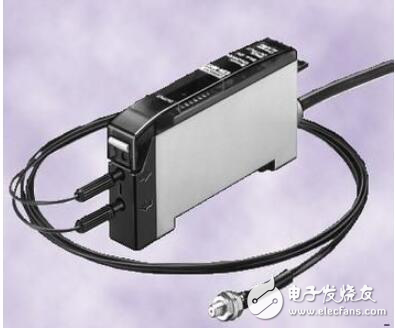The working principle of optical fiber sensor
The fiber optic sensor is a sensor that converts the state of the measured object into a measurable light signal. The working principle of the optical fiber sensor is to send the light beam incident from the light source to the modulator via the optical fiber, and interact with the external measured parameters in the modulator to make the optical properties of light such as light intensity, wavelength, frequency, phase, polarization state, etc. It changes and becomes a modulated optical signal, which is then sent to the optoelectronic device through an optical fiber, and the measured parameter is obtained after the demodulator. In the whole process, the light beam is introduced through the optical fiber, and then emitted after passing through the modulator. The function of the optical fiber is first to transmit the light beam, and secondly to act as an optical modulator.
The guide fiber is a medium that uses the principle of total internal reflection of light to transmit light waves. It is composed of a core and a cladding with a high refractive index. The refractive index of the cladding is smaller than the refractive index of the core, and the diameter is approximately 0.1 mm to 0.2 mm. When the light penetrates the core through the end face and reaches the interface with the cladding, the light is reflected back to the core layer due to the complete internal reflection of the light. In this way, after continuous reflection, the light can travel forward along the core with only a small attenuation. The optical fiber sensor guides the light emitted by the transmitter to the detection point with an optical fiber, and then guides the detected optical signal to the receiver with an optical fiber to achieve detection. According to different modes of action, fiber-optic sensing can also be divided into multiple types such as through-beam type and diffuse reflection type. The optical fiber sensor can realize the detection of the detected object in a far area. Due to the existence of fiber loss and fiber dispersion, in long-distance fiber optic transmission systems, intermediate amplifiers must be set up at appropriate positions on the line to process and amplify the attenuated and distorted optical pulse signals.

The physical property type optical fiber sensor uses the sensitivity of the optical fiber to environmental changes to convert the input physical quantity into a modulated optical signal. Its working principle is based on the optical modulation effect of the optical fiber, that is, when the external environmental factors such as temperature, pressure, electric field, magnetic field, etc. change, its light transmission characteristics, such as phase and light intensity, will change.
Therefore, if the light phase and light intensity change through the optical fiber can be measured, the change of the measured physical quantity can be known. This type of sensor is also called a sensitive element type or functional fiber optic sensor. The beam of the point light source of the laser diffuses into parallel waves and is divided into two paths by a beam splitter, one is the reference optical path, and the other is the measurement optical path. External parameters (temperature, pressure, vibration, etc.) cause the length of the fiber to change and the light phase of the phase to change, thereby producing different numbers of interference fringes. By counting its mode movement, temperature or pressure can be measured.
Working principle of structured optical fiber sensorStructural fiber optic sensor is a measurement system composed of light detection elements, optical fiber transmission circuits and measurement circuits. Among them, optical fiber is only used as the propagation medium of light, so it is also called optical transmission type or non-functional optical fiber sensor.
Smart Phone Holder For Car Vent
Smart Phone Holder For Car Vent,Air Vent Iphone Mount,Air Vent Phone Holder,Air Vent Cell Phone Pouch Holder
Ningbo Luke Automotive Supplies Ltd. , https://www.car-phone-holder.com